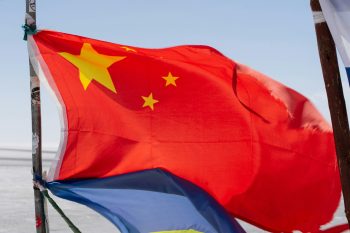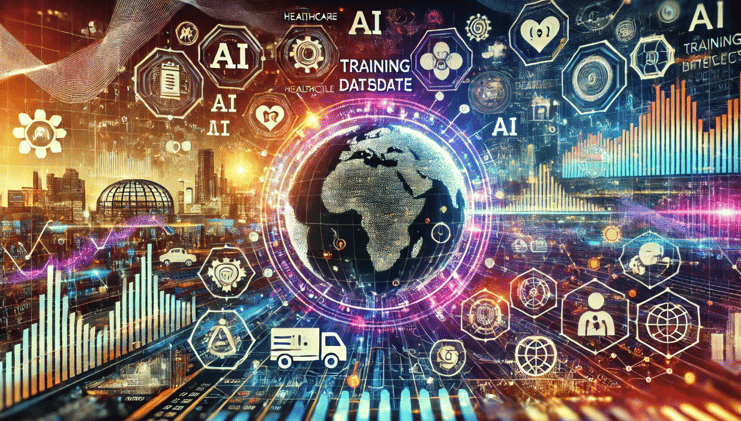About the Author
By Dashveenjit Kaur
December 23, 2024
Categories: AGI, Applications, Artificial Intelligence, Cloud, Companies, Data Center, Security
As an experienced tech and business journalist with a passion for uncovering stories that shape the online and print daily landscape, Dashveenjit Kaur brings a unique blend of expertise to her reporting. With a background in parliament reporting and occasional forays into lifestyle and art industries, she offers a multifaceted perspective on technological advancements.
The Emerging US-China AGI Rivalry
The United States and China are engaged in an escalating rivalry centered around Artificial General Intelligence (AGI). A recent report by the US-China Economic and Security Review Commission (USCC) recommends a Manhattan Project-style initiative to develop AGI, along with restrictions on humanoid robots. This development has significant implications for international trade, technological innovation, and the global supply chain.
A Manhattan Project-Style Initiative
The USCC’s annual report, released in November 2024, presents 32 recommendations that could fundamentally alter the dynamics of the US-China relationship. At its core lies an ambitious proposal: establishing a government-backed program to develop AGI, which would provide multi-year contracts to leading AI companies, cloud providers, and data center operators. This level of government involvement mirrors the urgency seen in previous technological races, raising questions about the role of state intervention in an industry primarily driven by private sector innovation.
Government Backed Program
The proposed AGI initiative would be backed by the Defense Department’s highest priority, ‘DX Rating’, typically reserved for critical national security projects. This designation underscores the significance that government officials place on achieving AGI breakthroughs. The program’s focus on developing AI systems that could match and potentially exceed human cognitive abilities is a testament to the growing recognition of AI’s potential impact on global competition.
Restrictions on Humanoid Robots
The report also recommends restricting imports of Chinese-made autonomous humanoid robots with advanced dexterity, locomotion, and intelligence capabilities. This move reflects growing concerns about connected technologies in critical infrastructure. The report builds on existing export controls in the semiconductor space by recommending stronger oversight of technology transfers and investment flows.
China’s Domestic Chip-Making Capabilities
The Commission suggests creating an Outbound Investment Office that prevents US capital and expertise from advancing China’s technological capabilities in sensitive sectors. This proposal acknowledges how deeply intertwined the US and Chinese tech ecosystems have become, while suggesting that this interdependence may now pose more risks than benefits.
Eliminating PNTR Status
Perhaps most significantly, the report recommends eliminating China’s Permanent Normal Trade Relations (PNTR) status—a move that could reshape the technology supply chain and trade flows that have defined the global tech industry for decades. This recommendation acknowledges how deeply intertwined the US and Chinese tech ecosystems have become, while suggesting that this interdependence may now pose more risks than benefits.
Data Transparency
The report’s release comes at a critical juncture in technological development. China’s push for self-sufficiency in vital technologies and its ‘new quality productive forces’ initiative demonstrates Beijing’s determination to lead in next-generation technologies. Meanwhile, AI capabilities and quantum computing breakthroughs have raised the stakes in technology competition.
Challenges and Future Implications
Achieving AGI remains a complex scientific challenge that may not yield quick results, regardless of funding levels. Additionally, restrictions on technology transfers and investment could have unintended consequences for global innovation networks that have historically benefited both nations. If these recommendations are implemented, the tech industry may need to navigate an increasingly complex regulatory landscape.
Coordination with Allies
The effectiveness of the proposed measures will likely depend on coordination with allies and partners who share similar technological capabilities and concerns. The report acknowledges this by recommending multilateral approaches to export controls and investment screening.
US-China Technological Competition: A New Chapter
US-China technological competition has entered a new phase where government policy may play a more direct role in shaping development. Whether this approach accelerates or hinders innovation remains to be seen, but the tech industry should prepare for increased scrutiny and regulation of international technological collaboration.
See Also:
Chinese Firms Use Cloud Loophole to Access US AI Tech
Want to learn more about AI and big data from industry leaders? Check out AI & Big Data Expo, taking place in Amsterdam, California, and London. The comprehensive event is co-located with other leading events including Intelligent Automation Conference, BlockX, Digital Transformation Week, and Cyber Security & Cloud Expo.




